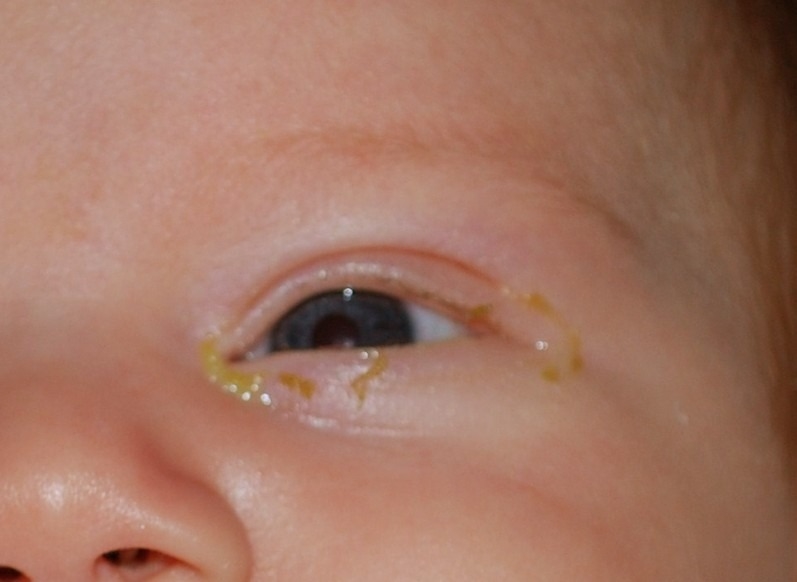
Blocked Tear Duct In Babies: Symptoms, Causes And Treatment
29 Jan 2018 | 5 min Read
Babychakra
Author | 1369 Articles
Medically reviewed by
Dr Vivek Kapse
A blocked tear duct in baby prevents tears from draining normally from the eyes, and this disorder is quite common to see in babies, although it can affect adults. While a swollen tear duct is usually seen in newborns, it can be a symptom of a significant health concern. So, let’s understand what a blocked tear duct in baby is, its symptoms, and its treatment.
What Is A Blocked Tear Duct in Babies?
A blocked tear duct is a common condition causing sticky eyes in infants and toddlers. The eyes tend to produce a sticky fluid accumulating in the eyelids. The tears that lubricate baby’s eyes cannot normally drain out through the nose in babies and gather on the surface of the eyes.
There’s a tiny opening at the inner corner of each eyelid, which opens into a passage inside the nose. The tears that moisten and keep the eyes clean drain from this opening into the nose. In many newborns, this swollen tear duct is blocked or not completely formed. A child can have tear duct problems in one eye.
Causes Of Blocked Tear Duct in Babies
Tear duct blockage can occur at any age, from infancy to maturity. The following are some of the causes, have a look:
Congenital Blockage: A clogged tear duct is common in newborns. It’s possible that the tear drainage system isn’t fully matured or a duct irregularity exists. The hole that discharges into the nose is often covered by a thin tissue barrier (nasolacrimal duct).
Changes As You Become Older: The microscopic apertures that drain tears (puncta) may constrict as you get older, causing a blockage.
Inflammation Or Infection: Tear ducts can get clogged as a result of an infection or inflammation in your eyes, tear drainage system, or nose.
Eyedrops: Long-term usage of certain medicines, such as glaucoma eye drops, might produce a clogged tear duct in rare cases.
Blocked Tear Duct Symptoms in Babies
Blocked tear duct symptoms are easy to recognize. Newborn babies do not produce tears until they are a few weeks old. So, a clogged eye duct is not noticed at birth. This disorder is generally noticed when the baby is about 2 weeks old. Some of the common symptoms in babies include the following:
1. Watery And Wet Eyes
- Pool of tears forming at the corner of the baby’s eyes
- Tears flowing down the baby’s cheeks from the eyes
- A whitish-yellowish discharge may be present near one or both eyes.
- Crusting and thickening of the yellow discharge, especially when the baby is sleeping.
- Sticky eyes are difficult to open after waking up from a long sleep.
2. Taking Care Of The Baby’s Eyes
-
Gently wipe the baby’s eyes with a cotton ball dipped in warm water or a sterile saline solution to remove the discharge built up during the night.
-
Clean your baby’s eyes regularly until the tear ducts open up fully.
-
Traditional remedies recommend putting a few drops of breast milk in the baby’s eyes to prevent eye infection.
3. Diagnosis Of Tear Duct Obstruction in Babies
A doctor diagnoses a tear duct obstruction during a physical examination. He may also conduct one or more tests to confirm this diagnosis and take a complete medical history of the child.
Treatments For Blocked Tear Duct in Babies
Blocked tear duct treatment differs from child to child. The doctor may often suggest waiting for some time for the tear duct to open naturally. Your doctor may recommend a unique massage technique to facilitate the opening up of the lacrimal duct. This massage puts gentle pressure on the blocked eye duct on the nose bridge, which helps it to pop open. Gentle pressure on the corners of the eyes near the nose with the fingertips several times a day helps unblock the blocked eye duct. If there is an infection, the doctor may prescribe certain eye drops or ointments to cure it.
Sometimes, the tear duct plugs up due to an external injury. In this case, doctors generally recommend waiting for a few months for the duct to open naturally. When the lacrimal gland fails to open by non-invasive means, the doctor may consider surgery. The nature of the surgery depends on the extent of the blockage. Though surgery is usually avoided for babies and toddlers, it is an effective blocked tear duct treatment. It is the last option when all other treatment options have failed.
Source of banner image: healthool
Disclaimer: The information in the article is not intended or implied to be a substitute for professional medical advice, diagnosis or treatment. Always seek the advice of your doctor.
Also read Ear Infection In Babies – A Testing Time For Both Parent And Child.
Related Articles-
Ear Infection In Babies: Know what ear infection signs to look for and make your tiny tot as comfortable as possible. Check out here!
Dental Care In Children: Understand the importance of dental health care in children. Click here to explore.
Vision Problems In Children: Learn how to improve children’s vision problems-here!
A


Related Topics for you
Suggestions offered by doctors on BabyChakra are of advisory nature i.e., for educational and informational purposes only. Content posted on, created for, or compiled by BabyChakra is not intended or designed to replace your doctor's independent judgment about any symptom, condition, or the appropriateness or risks of a procedure or treatment for a given person.
